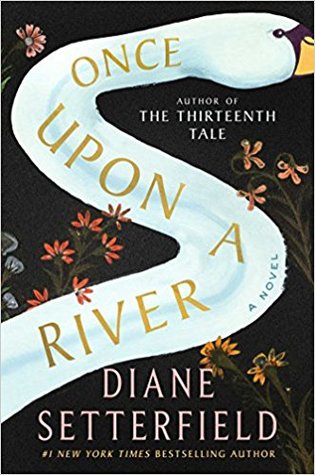The Clockmaker’s Daughter Kate Morton (2018)
All of Kate Morton’s trademark writing techniques are on display in The Clockmaker’s Daughter, especially her explorations of the linkages between places and the people who inhabit them. As usual, Morton leaps fearlessly from one time period to another, requiring her reader to keep track of innumerable interrelated characters, and her mystery tale turns on a modern-day character’s discovery of a piece of history.
Elodie Winslow is an archivist in 2017 London who is tracking the origins of a leather satchel that she dates to the 1860s. The satchel contains a photograph of a striking woman as well as a sketchbook with a drawing of house by a river. These objects will weave in and out of The Clockmaker’s Daughter, as will a large and valuable diamond. Elodie’s intuitive sense that she knows the house leads her to investigate the contents of the satchel far more than her job requires. And so the novel loops back to the nineteenth century, when the owner of the satchel, Edward Radcliffe, was an up-and-coming British visual artist whose fiancé was shot dead in an apparent robbery at his country house, Birchwood Manor, on the Upper Thames in the Cotswolds.
Ah, here’s the mystery, here’s the enticing location. But the novelist is not content to have Elodie discover her connection to Edward directly. Instead the story draws in many other inhabitants of Birchwood Manor, including a ghost. I’m not usually a fan of ghost stories, but I tolerated this ghost, who is Birdie Bell, a contemporary of Edward. The novelist’s device functions to give the reader an observational view of the activities in Birchwood Manor over the many decades since Birdie, the daughter of a clockmaker, came to haunt the house.
For example, at the end of the nineteenth century, a young girl named Ada lives in the house when it’s briefly converted to a school. In the 1920s, a scholar named Leonard visits as he researches a biography of Edward Radcliffe. During World War II, a woman named Juliet and her three children escape to the house when their home in London is bombed. All these characters, and many others, have their own subsidiary mysteries, and all the stories form a complex nexus. If you’re a reader who delights in such complexity, Kate Morton is the writer for you. She doesn’t provide pages of family trees, as some family sagas do, but figures you can keep all the characters straight in your head. Do the 482 pages occasionally bog down? Sure, but when your attention starts to flag, Morton bustles you off to another storyline.
Anglophiles, take note that the archaeological history of England, the sense of the ancient inherent in every locale, is strong in The Clockmaker’s Daughter.
Ada discovers fossils: “Every relic they unearthed came with a story, a secret life led long before the object reached their hands.” (165)
Leonard “felt a greater connection to the ancient people who’d tracked the very paths across the land that he followed now than he did with the bright young things dancing the nights away in London. He was aware as he walked of belonging; in an essential way he knew himself to be of the earth, and with each footstep he drew further solidity from it.” (217)
Juliet muses on timelessness of the Thames: “No matter what else was happening in the world, regardless of human folly or individual torment, the river kept flowing.” (288).
Kate Morton’s novels are sui generis, with drawn-out, elaborate plots that are highly reliant on coincidence and unexpected connections over the course of history. Places—homes and natural environments—anchor them.
For more Kate Morton, see my review of The Lake House, her 2015 mystery novel. Or check out another writer of historical mysteries, Diane Setterfield.



